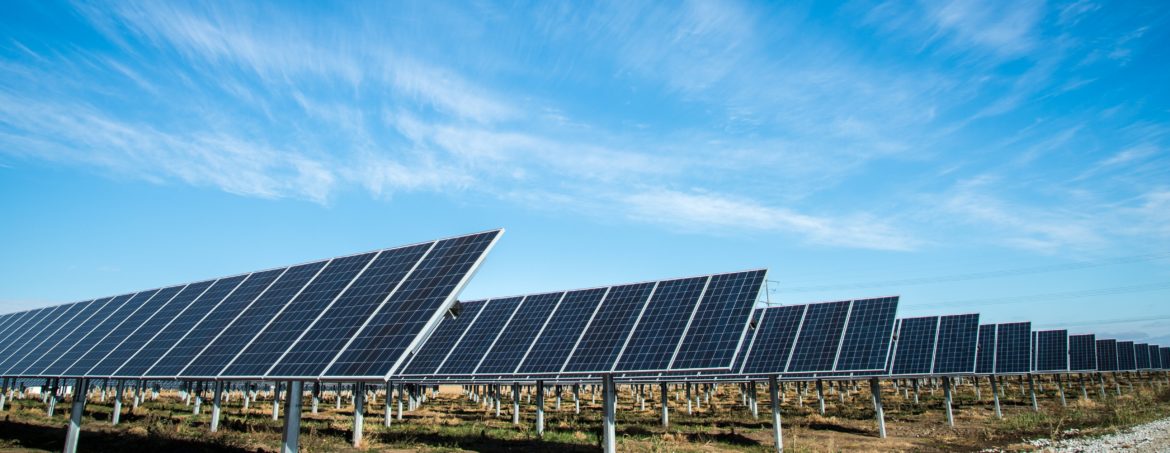Distributed solar energy refers to utilizing the residential and industrial rooftop space to produce electricity from solar PV panels. Some of the advantages of using rooftop solar include minimizing the cost of land and additional transmission capacity and saving on the transmission and distribution losses, which could be as high as 30% for traditional power plants. India is in a transformational phase for solar rooftop, where the focus is on building capacity and raising awareness about the advantages. With the declining prices of PV modules, solar rooftop electricity has become much cheaper than commercial and in some states, it is also cheaper than residential electricity.
With the declining prices of PV modules, solar rooftop electricity has become much cheaper than commercial and in some states, it is also cheaper than residential electricity.
India has set a target to achieve 100 GW of solar power by 2022, 40% of which is estimated to come from rooftop installations. However, the total installed capacity to date for rooftop is less than 10% of the target (as per Bridge to India). Even with the growing investments and free flow of debt and equity financing, achieving the target of 40 GW seems unrealistic. Most analysts project that the installed capacity by 2022 for rooftop solar will be between 12-15 GW.
About 70% of the current rooftop installations are for the commercial and industrial (C&I) customers as the cost savings for them are much higher, could be in the range of 20-60%, and they gain from the reduction of the carbon footprint as well. Most C&I customers also have access to Renewable Energy Services Company (RESCO) model where the installer owns the plant and sells electricity to the C&I for a fixed subsidized rate. Net-metering, which means basing the electricity bill on the net of production and consumption by the customer, brought a significant boost in this segment, as customers could install a much higher capacity which led to a steep growth. However, reasons for lower than expected adoption among the C&I customer include dynamically changing government regulations and lack of cooperation by discoms (electricity distribution companies).
The subsidized power from the grid for home-owners is so cheap that the upfront expense in installing solar on the rooftop does not make economic sense.
Residential customers contribute only 15% to the total installed capacity due to higher financial and operational challenges. There are multiple reasons for home-owners to avoid rooftop solar. The subsidized power from the grid for home-owners is so cheap that the upfront expense in installing solar on the rooftop does not make economic sense. In contrast, the 30% subsidy that the government offers for rooftop installations is difficult to obtain and involves a long process that could take months. Most residential customers do not have access to bank financing or a RESCO model of operation. Net metering policies are not clearly understood, and discoms, which often see rooftop installations as a threat, are not supportive of the customers with rooftop installations.
Concerns around the quality of installation are common for both C&I and residential customers. Multiple incidences have been reported where the plants have suffered damage due to sub-optimal design or are not able to meet generation targets due to poor quality of PV modules or installation. Sub-optimal designs can also make regular cleaning and maintenance of modules very difficult. Manufacturer’s warranties for modules are not clearly expressed and most installers do not offer a generation guarantee after initial years. This increases the risk for the end customers considerably.
The number of solar rooftop installers has seen exponential growth in the last few years.
However, with surging international investments, there is hope for solar rooftop installations to grow. The recent acquisition of Amplus, a distributed generation company with nearly 500 MW of operational portfolio in RESCO model indicates the interest of international companies and funds to invest in the solar rooftop space in India. The number of solar rooftop installers has seen exponential growth in the last few years. Increasing competition has led the installers to provide value-added services that include arranging finance for the customers, providing better monitoring, operations, and maintenance of assets as well as helping customers obtain the benefits of net-metering and subsidy. Latest monitoring software help the customers to keep a tap of not only the amount of electricity generated but also the net consumption.
While installing a PV plant on the roof has become easier than ever for both residential and C&I customers, it is important that the customers vet the installer properly before finalizing. Important aspects to look at include the financial stability of the installer, performance of current assets, monitoring and maintenance support provided by the installer and the quality of material being used. Ensuring proper quality control from the start to the end of building and maintaining a solar asset could mean free electricity for the customer for 25 years!
